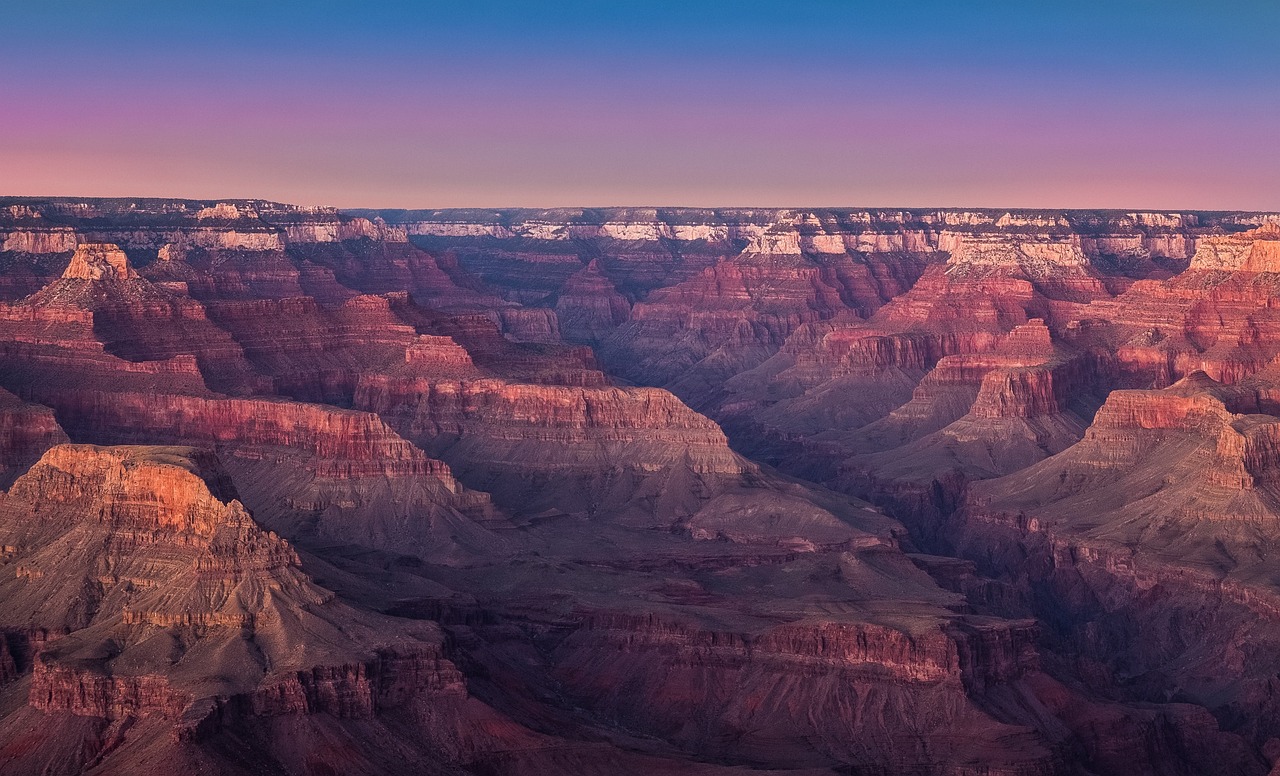The Grand Canyon, a world-renowned natural wonder, is a place of breathtaking beauty and immense geological significance. To fully appreciate this majestic wonder, it’s essential to choose the best time to visit Grand Canyon National Park.
The Grand Canyon is one of the Seven Natural Wonders of the World. This iconic landmark is one of the most coveted destinations from around the world. The best time to go to the Grand Canyon will differ based on various factors. Let’s explore the optimal times based on weather, crowds, and wildlife opportunities to help you plan an unforgettable adventure.
Best Time to Visit Grand Canyon National Park Based on Weather
Understanding the Grand Canyon’s weather is crucial for planning a comfortable and enjoyable visit. There are reasons to visit each season. Here is an exploration of the weather at the Grand Canyon and what you might expect:
Spring (March to May):
Spring brings milder temperatures, with daytime highs ranging from 60°F to 80°F (15°C to 27°C) and cooler nights around 30°F to 50°F (-1°C to 10°C). It’s a delightful time to explore the canyon without the scorching summer heat.
Summer (June to August):
Summer sees the highest temperatures, with daytime highs exceeding 90°F (32°C) in the Inner Canyon. Nights are warmer, ranging from 50°F to 70°F (10°C to 21°C). However, be prepared for intense heat and possible thunderstorms.
Fall (September to November):
Fall is a delightful season, offering pleasant daytime temperatures between 60°F and 80°F (15°C to 27°C) and cooler nights from 30°F to 50°F (-1°C to 10°C). The fall foliage adds vibrant colors to your Grand Canyon experience.
Winter (December to February):
Winters are the quietest time, with daytime highs in the 40s and 50s°F (4°C to 15°C) and nighttime lows often below freezing. The North Rim is closed in winter, but the South Rim remains accessible for those seeking a serene and snow-covered experience.
Describe the Seasonal Changes and Best Experiences of Each
- Spring: Spring offers blooming wildflowers, rushing waterfalls, and the chance to hike before the summer crowds arrive. It’s an ideal time for photography.
- Summer: Summer is the best time for rafting the Colorado River, but it can be scorching. Hike in the cooler mornings or explore the North Rim for a break from the heat.
- Fall: Fall is perfect for hiking, with pleasant temperatures and the changing colors of the deciduous trees. It’s also an excellent time for stargazing.
- Winter: Winter is the least crowded season. While the North Rim is closed, the South Rim’s snow-covered landscape provides unique photo opportunities, and the canyon takes on a quiet, peaceful charm.
Best Time to Visit Grand Canyon Based on Crowds and Prices
- Crowds: Summer is the peak tourist season when the Grand Canyon sees the most visitors. To avoid crowds, visit in the shoulder seasons of spring and fall.
- Prices: Accommodation prices are typically higher in summer, so booking in advance or visiting during the less crowded seasons can help you secure better rates.
Best Attractions of the Grand Canyon and Best Time to See Them
- South Rim: The South Rim offers stunning vistas and is accessible year-round. For the best experience, visit in spring or fall to avoid the summer heat and crowds.
- North Rim: The North Rim is quieter and cooler than the South Rim. It’s open from mid-May to mid-October. Fall is a particularly scenic time to explore this area.
- Havasu Falls: To see the stunning Havasu Falls at its best, visit in late spring when the water flow is at its peak, and the weather is pleasant.
What Wildlife Can You See at Grand Canyon National Park?
The Grand Canyon is home to diverse wildlife. Here’s when and where to see some of its inhabitants:
- California Condors: These endangered birds can be spotted year-round, but the spring and fall migrations are prime times for viewing.
- Elk: Fall is the elk’s mating season, making it the best time to hear their bugling calls and see their impressive antlers.
- Bighorn Sheep: Summer and early fall are excellent for spotting bighorn sheep, especially near the canyon walls.
- Mule Deer: Mule deer are prevalent throughout the park and are often seen during the cooler hours of early morning and late afternoon.
Conclusion
The Grand Canyon National Park offers awe-inspiring landscapes and memorable experiences throughout the year. Your choice of when to visit should align with your weather preferences, crowd tolerance, and the kind of wildlife encounters you seek. Whether you opt for the vibrant colors of fall, the tranquility of winter, or the wildflowers of spring, the Grand Canyon will undoubtedly leave an indelible mark on your soul.

